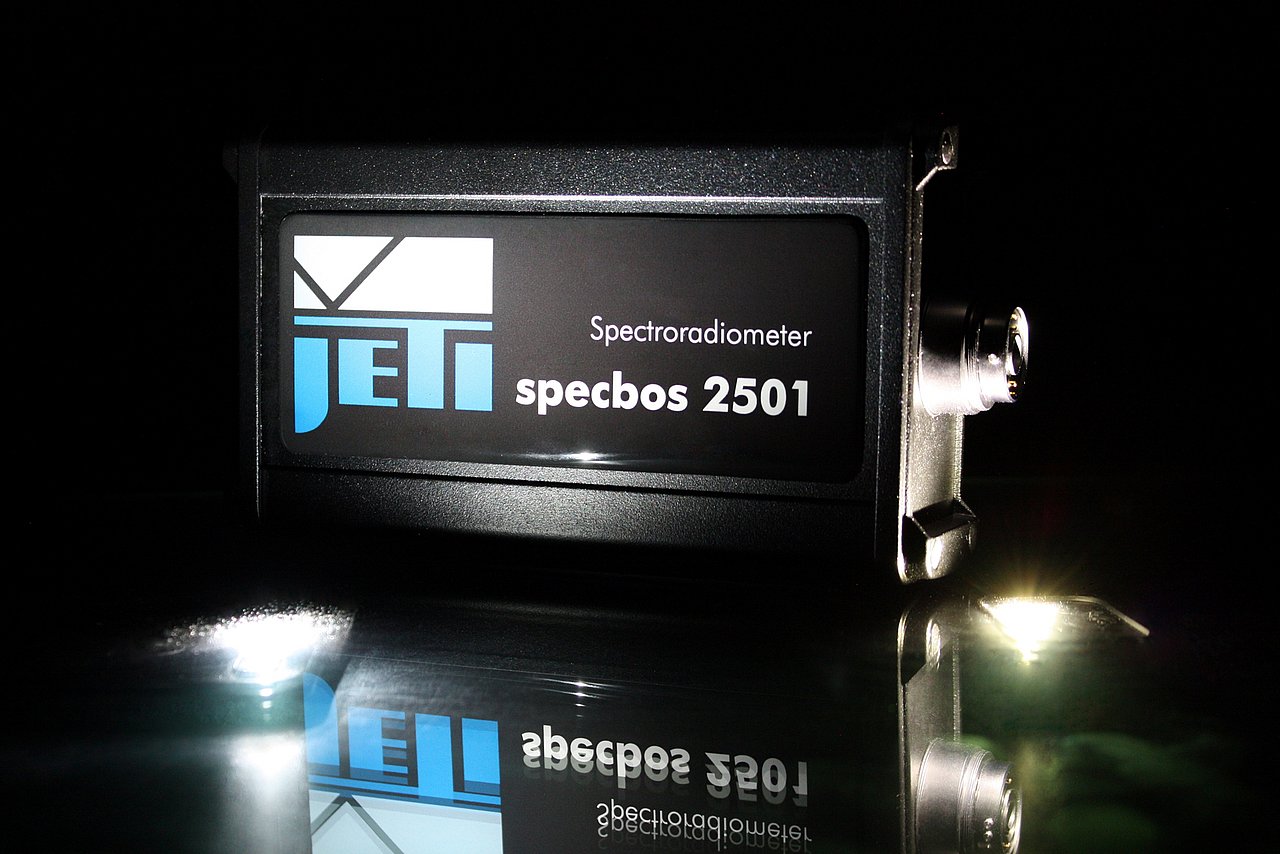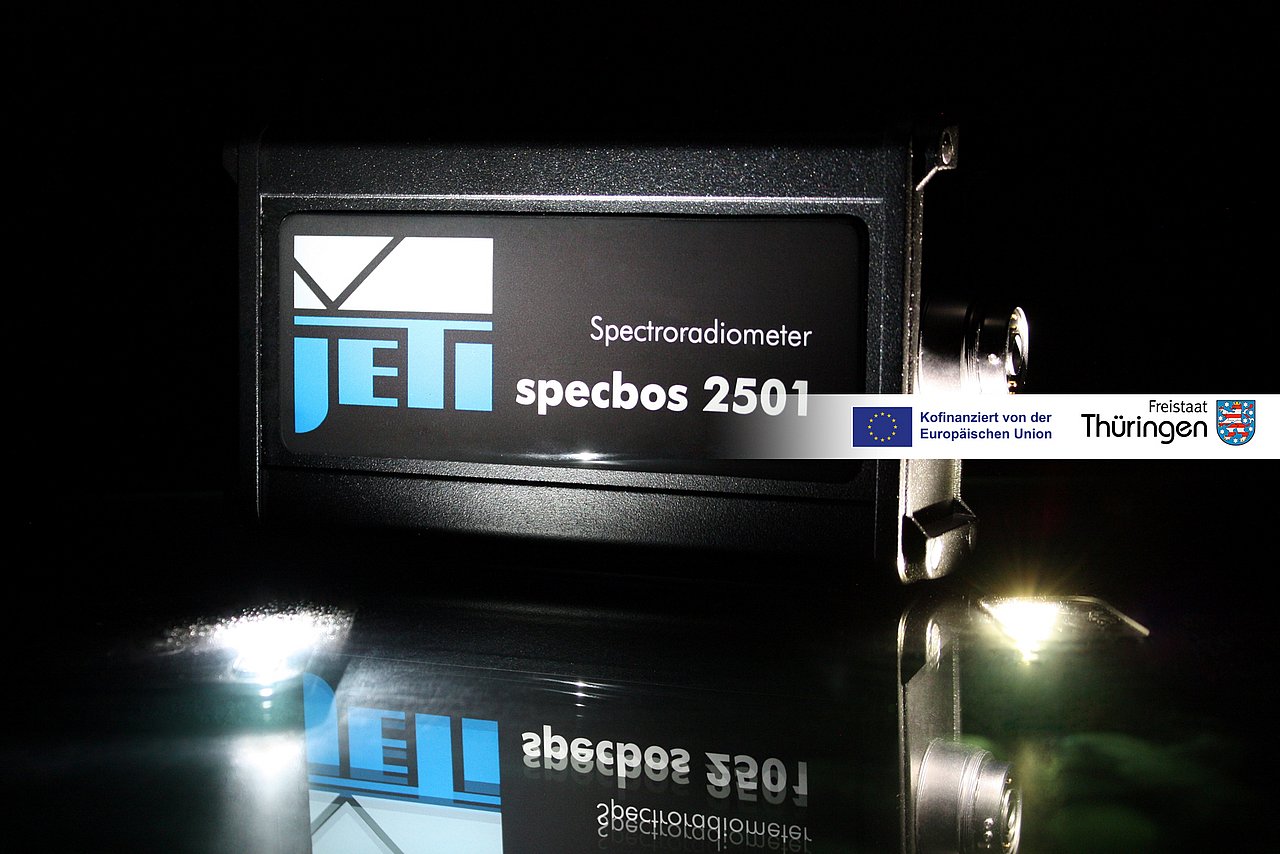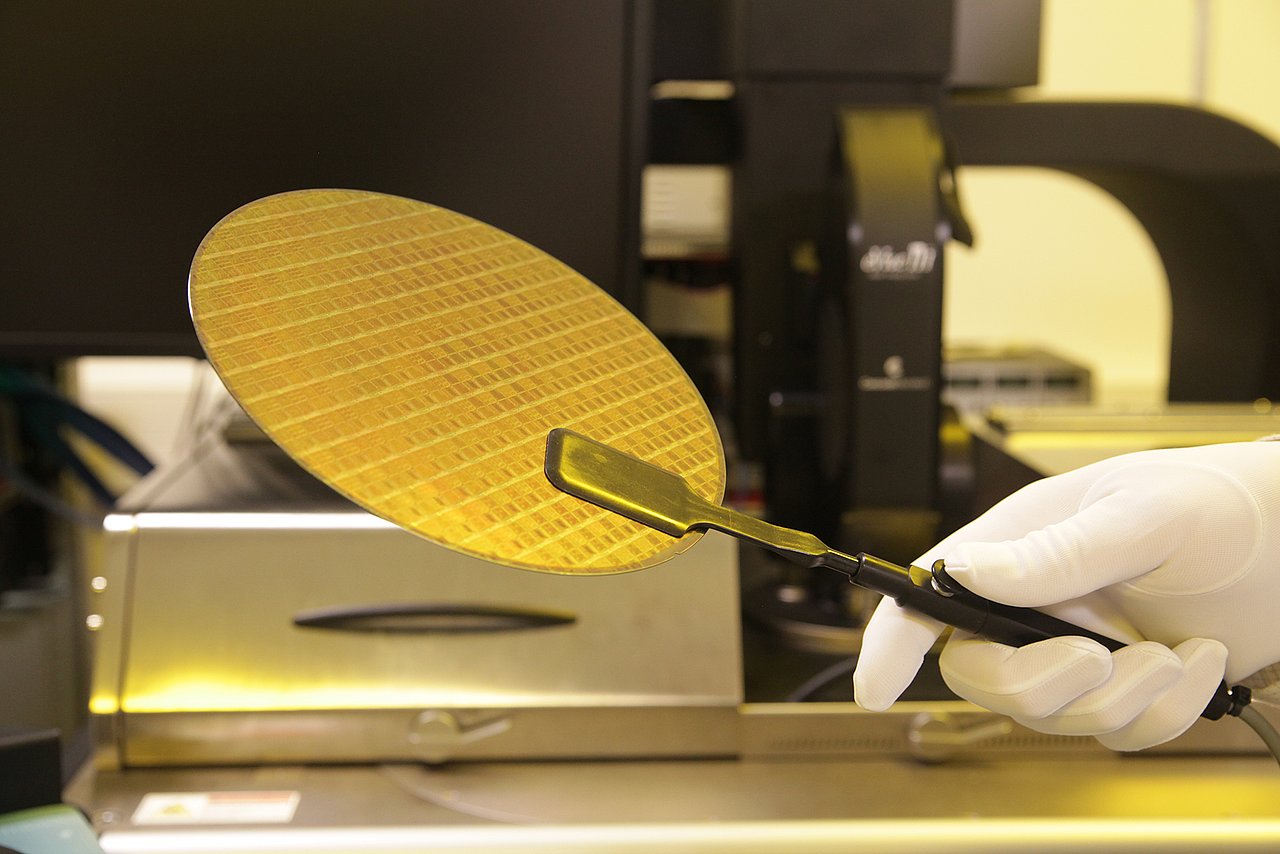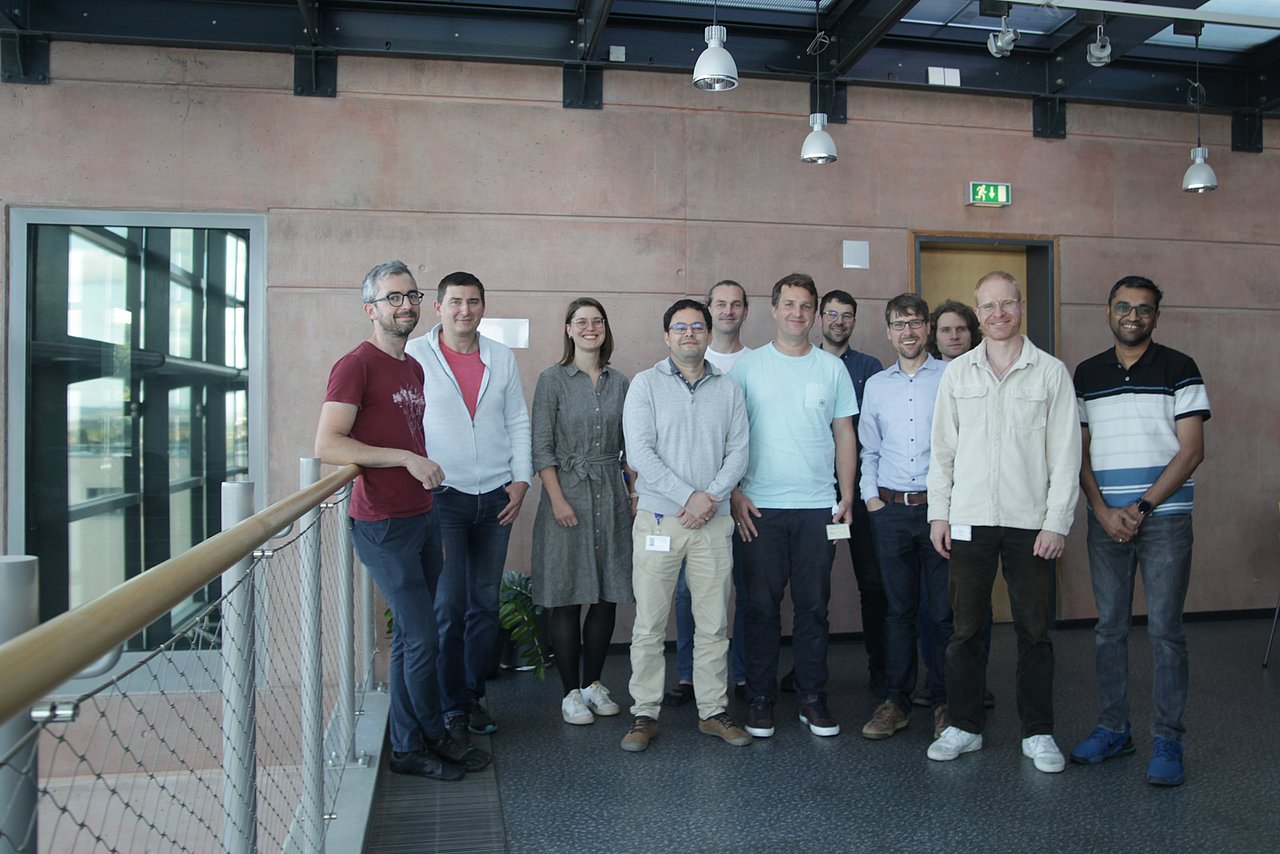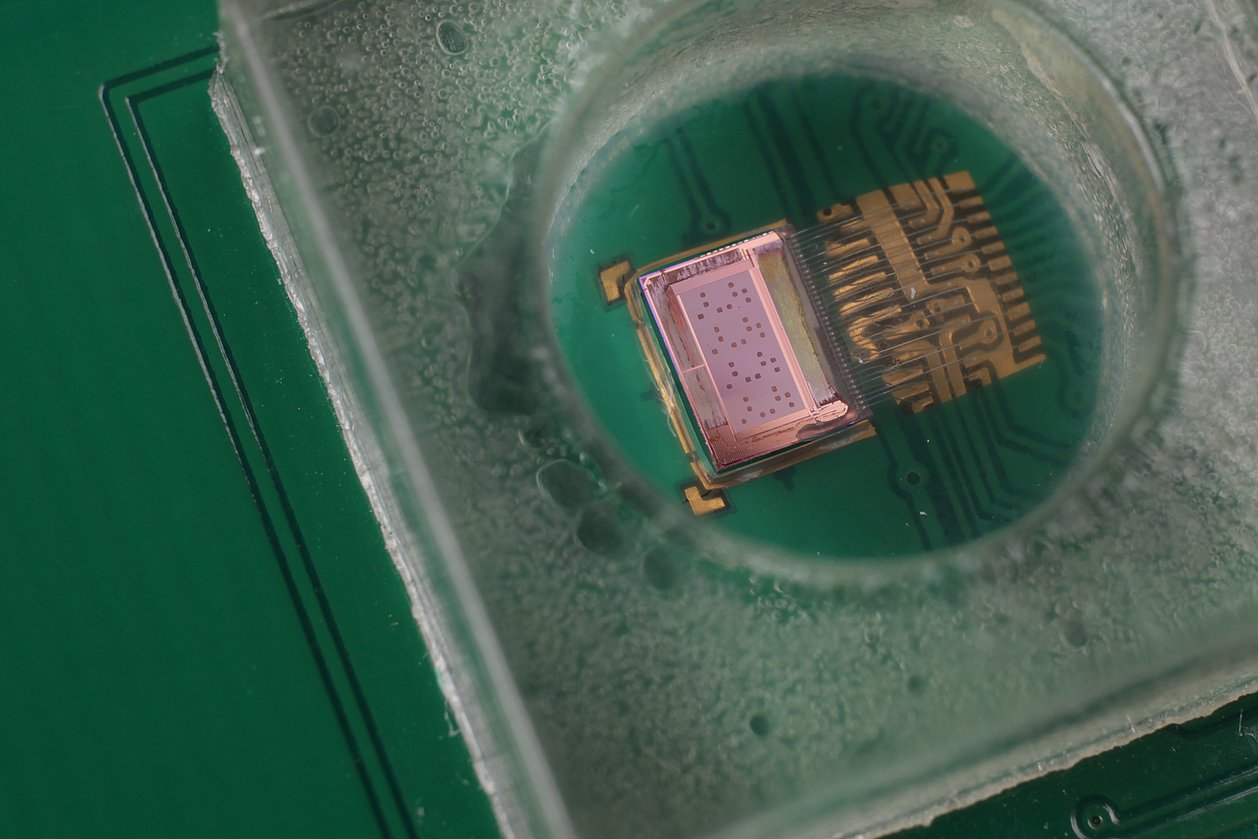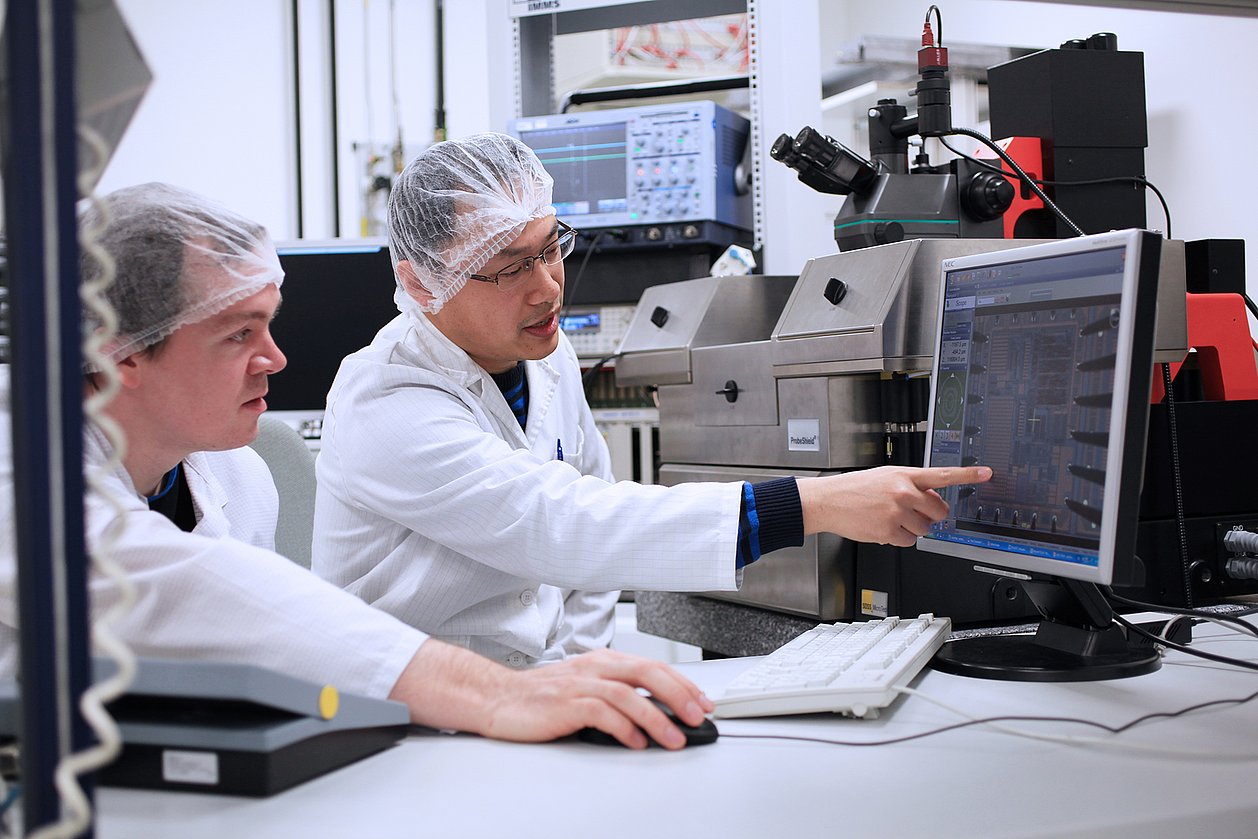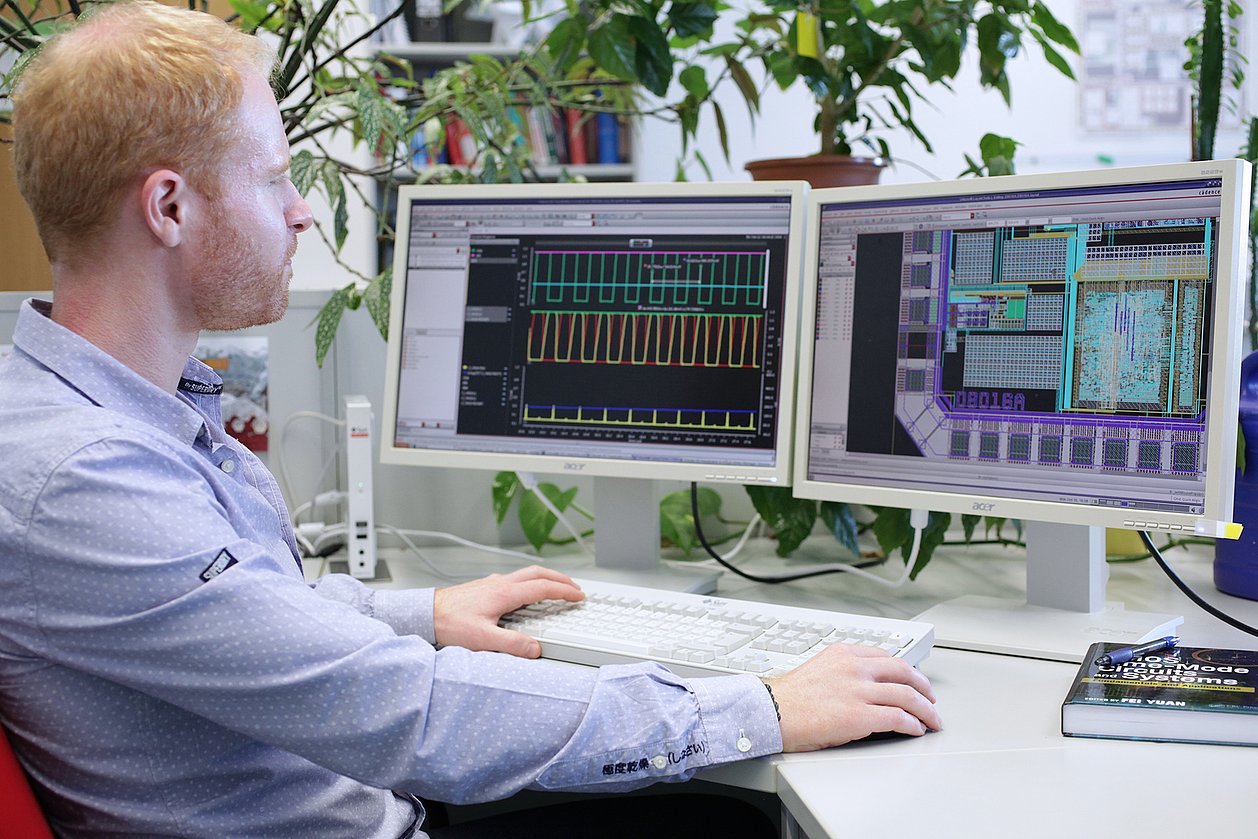Project PANDIA
IMMS develops novel CMOS and SPAD sensor ICs for spectroradiometers for faster and more sensitive analysis of light
Limits of today's spectroradiometers
Spectroradiometers are used in many scientific and industrial applications where the spectral properties of light need to be precisely analysed - from HDR display and projector manufacturing and the lighting industry to photovoltaics, materials science, environmental technology, the food industry, pharmaceuticals, medicine and diagnostics.
The PANDIA project aims to develop a new generation of spectroradiometers that are significantly more sensitive, faster and more robust than today's devices. Until now, manufacturers have relied on standard line sensors purchased internationally. These are limited by high dark current, long measurement times and the use of mechanical shutters. In addition, there is a lack of tailor-made solutions for growing requirements, for example in HDR display production, lighting technology or pharmaceutical quality control.
Novel integrated sensor technology for spectroradiometers
PANDIA's innovation lies in the development of application-specific CMOS line sensor ICs in the German Land of Thüringen. Two novel approaches are being pursued. Firstly, photodiode-based sensors with integrated electronic dark reference are being developed to replace the mechanical shutter, halve the measurement time and increase robustness. Secondly, photon-counting sensors based on single-photon avalanche diodes (SPADs) are being developed that reliably detect even extremely weak light sources, thus significantly expanding the dynamic range. In addition, analog-to-digital converters (ADCs) and temperature sensors are integrated directly into the chip in both approaches to increase measurement accuracy and reduce external electronics.
IMMS contribution
IMMS contributes its expertise in the design, simulation, layout, commissioning and characterisation of integrated optoelectronic circuits. It develops the sensor ICs, optimises dark current compensation and binning strategies, and supports integration into laboratory samples.
Unique feature
The solutions being developed in the project are technologically unique: they will combine high sensitivity, short measurement times and robust electronics in a compact, cooled sensor module. This will create a unique selling point for Thüringen – a closed regional value chain from semiconductor manufacturing to market-ready spectroradiometers.
Acronym / Name:
PANDIA / Interdisciplinary partnership for innovative spectroradiometers from Thüringen (PANDIA): Development and research of line sensor ICs for spectroradiometersDuration:2025 – 2028
Application:
|Wide range of applications in science and industry: HDR displays| projectors| lighting| photovoltaics| materials science| environmental technology| food industry| pharmaceuticals| medicine| diagnosticsResearch field:Integrated sensor systems
Related content
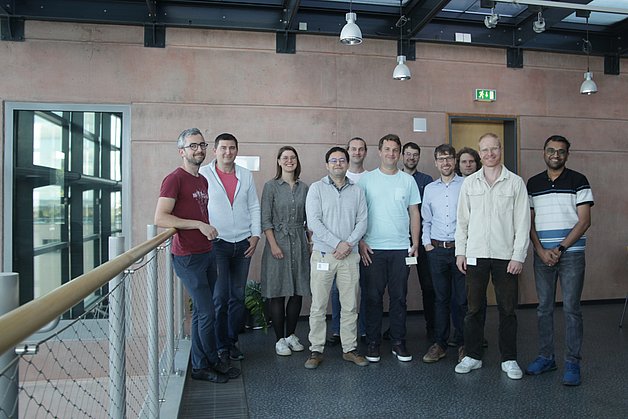
Press release,
Innovative spectroradiometers for better analysis of light
Thuringian PANDIA project launched
Contact
Contact
Eric Schäfer, M. Sc.
Head of Microelectronics / Branch Office Erfurt
eric.schaefer(at)imms.de+49 (0) 361 663 25 35
Eric Schäfer and his team research Integrated sensor systems, especially CMOS-based biosensors, ULP sensor systems and AI-based design and test automation. The results are being incorporated into research on the lead applications Sensor systems for in-vitro diagnostics and RFID sensor technology. It will assist you with services for the development of Integrated circuits and with IC design methods.
Funding
The interdisciplinary partnership for innovative spectroradiometers from Thüringen (PANDIA) is supported by the funding programme of the German Land of Thüringen for the promotion of research, technology and innovation (RTI) as the research and development initiative Thüringen Verbund under the joint project number 1004537, the IMMS topic “Development and research of line sensor ICs for spectroradiometers” under the reference 2025 VFE 0027.


